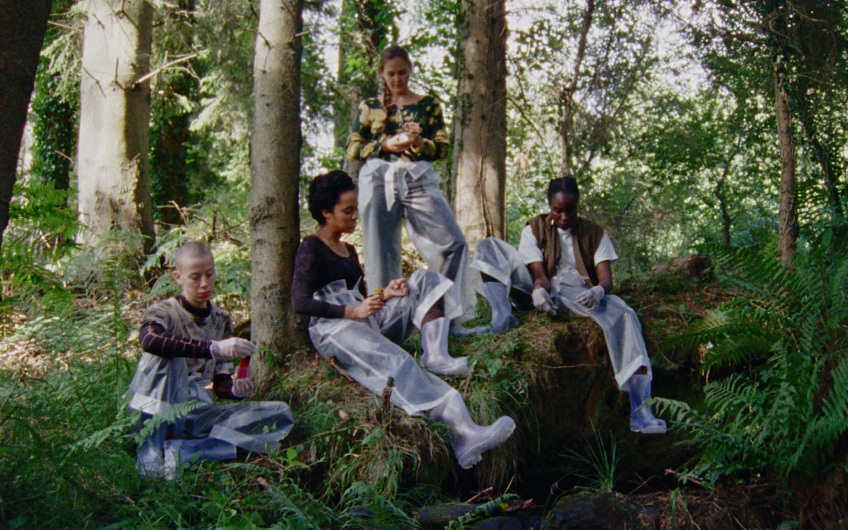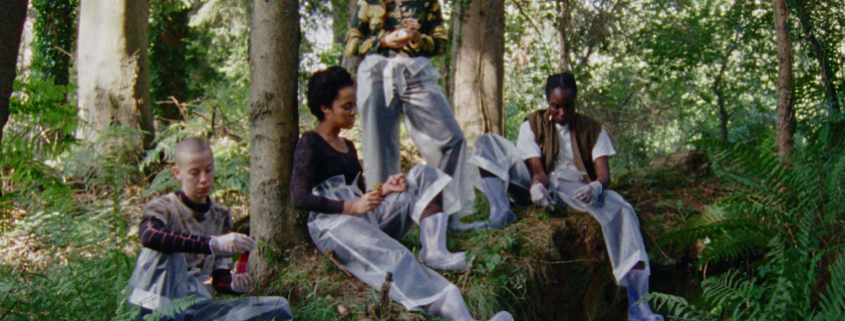Students curate meaningful art exhibit

A team of six masters students at the Roski School of Art and Design curated an exhibit called “Unending Beginnings,” which features works from artists exploring the connections between materialism, survivalism and colonialism.
Emma Christ, Nahui Garcia, Lauren Guilford, Leah Perez, Austen Villacis and Ruei-Chen Tsai created the gallery as part of their masters of art in curatorial practices and the public sphere degree program. The exhibit will run until Feb. 11 at the USC Roski Graduate Gallery in the Los Angeles Arts Districts and will remain open Monday through Friday from 12 p.m. to 5 p.m.
The idea for the gallery originated in the spring of their first year, when the students started talking about curating the exhibit. During that time they also shared texts and authors of interest who spotlight Indigenous communities through the gallery, Garcia said.
“The title of our show is ‘Unending Beginnings’ because it’s rooted in the idea that the apocalypse has already occurred to indigenous people,” she said.
Each curator originally suggested three to five artists to feature in the gallery. Curators held studio meetings with each artist to determine which of their works would serve best for the show.
The six artists involved in the exhibit each use unique mediums to address different aspects of dismantling the ways in which capitalism and colonialism intrinsically tie into ecological destruction, according to the exhibit’s press release.
Featured artist Eddie Rodalfo Aparicio uses materials associated with pre-Hispanic culture and covers political and racial tensions that exist between Los Angeles and El Salvador, while Pia Camil explores Mexico’s urban landscape and consumerism through sculpture, painting, film and performance.
Assistant professor of ethnic studies Gerald Clarke Jr., whose artwork also takes part in the exhibit, draws from his cultural heritage to explore his community’s struggles through art.
Other artists at the exhibit, such as Colleen Hargaden used time-based media to traverse “ecology, futurity, and technology,” while Cécile B. Evans works with video and installations to investigate emotional connections with the physical and technological world. Angel Lartigue, whose artwork is research-based, uses a process called “putrefaction” to understand the relationship between body and land.
Despite presenting vastly different artwork, connections between the artists and their work allow for strong themes and ideas within the gallery, said Christ.
“You can see this sort of visual flow,” Christ said. “When you read the didactics, the wall materials as well as the forthcoming essays, there’s a lot of underlying thematic ideas of things like mutability, malleability, materiality, that are prevalent throughout them.”
The gallery will also host a workshop with anthropologist Claudia Serrato, who is very interested in food, Guillford said.
Serrato is “really interested in how you can tell stories … and history thorugh food. … not like making a meal and eating together. It’s more about the materiality, and the history.” According to Christ, the gallery focus on “ways of exploring or engaging with alternative histories, futures and presents, and I think that that food is really representative of being a medium or a vessel [for] retelling narratives and retelling experiences through really tangible aspects”
The curators hope visitors will not only enjoy the artists’ works but also learn about new cultures and histories while visiting the gallery.
“Pia Camil talks about Indigenous people from southern Mexico, so we want [viewers] to maybe, by reading the description or looking her up … find more information about those communities,” Garcia said.
The gallery also creates room for viewers to both learn and reflect for themselves, said Guilford.
“There are so many layers to each work and they all approach materiality in a different way, and they’re all very layered with different histories and ecologies, and these things are all kind of converging in each work,” Guilford said. “What I want people to take away from the show is just thinking about how they interact with the world and systems.”

